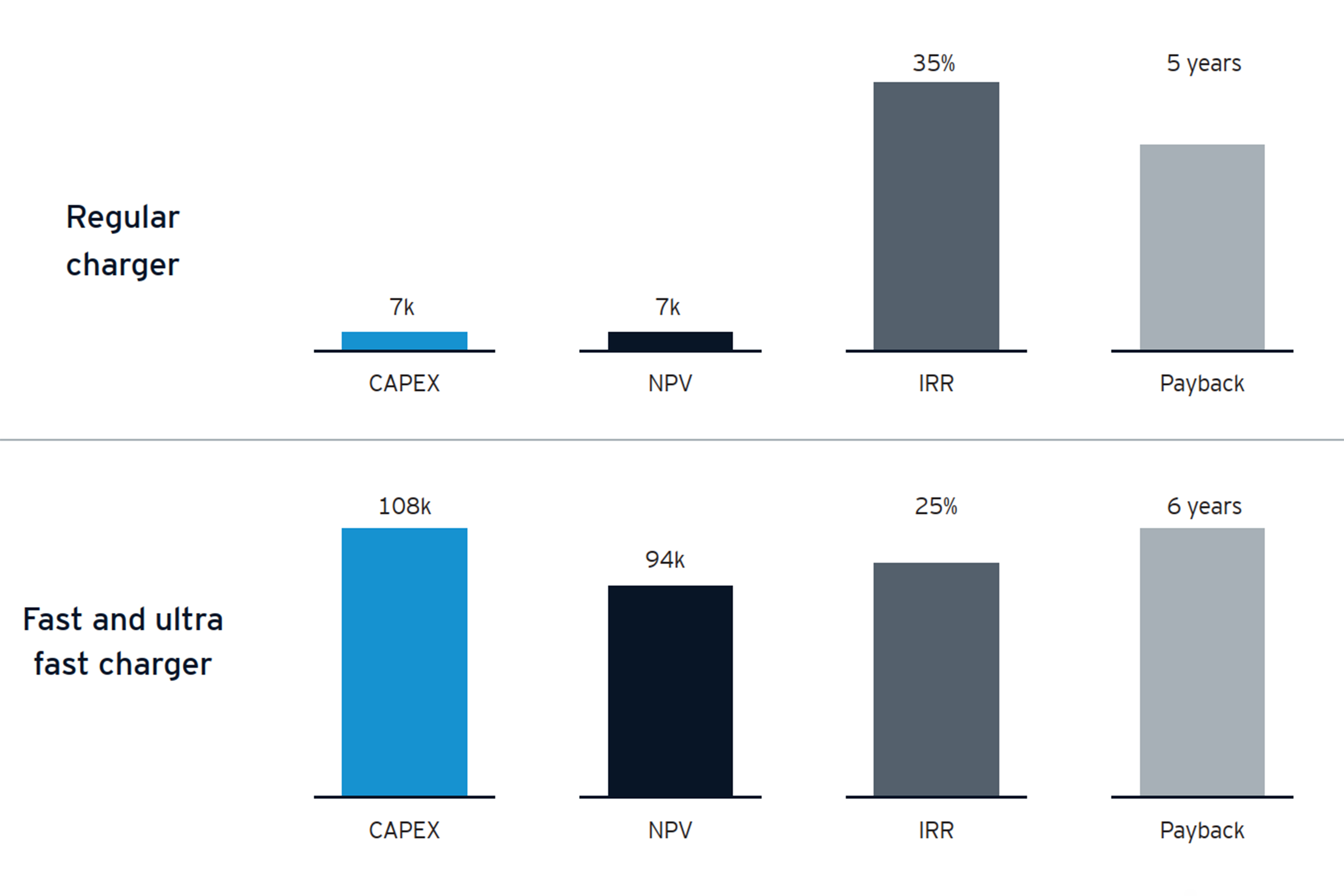In the workplace and destination market, CPOs are well positioned to win as they can leverage their flexibility and ability to industrialize. However, this segment is also the most complex as it requires coordination between retailers, hospitality, city parking lots and workplace parking lots. Professional CPOs have the strongest capabilities to manage both the electricity and the financial flows. The workplaces and destinations can choose to partner with CPOs in several ways, with revenue splits depending on how the partnership is structured. CPOs, on their part, can provide the one-stop-shop approach that consumers want.
Additional business cases include highway rest stops and on-street parking. Both old players (oil & gas), with existing infrastructure, and new (CPO) players with their know-how are well-positioned to take a dip into highway charging infrastructure. However, it is also a value pool that requires investors with deeper pockets. Chargers need to be more powerful (to meet consumer demands for shorter charging times) and thus are more expensive, especially with heavier segments entering the roads.
Finally, on-street parking will require local governments to step up. Street charging is the hardest charging option to build a business case, largely given the mismatch between length of stay and duration of charge. It also presents the highest operation and installation costs of all the charging types. Local governments can partner with CPOs or other qualified charging infrastructure professionals to install, manage, and maintain the charging infrastructure using concession-like business models.
Large players are already entering the fray through a series of acquisitions and partnerships along the EV charging infrastructure value chain in several countries. Utilities, oil & gas companies, private equity players and highway infrastructure companies are the most prominent incumbents to buy their way into the charging infrastructure market. These acquisitions create an ecosystem including both historical players and CPOs, that offer differentiated value to a variety of customers.
The competitive advantage of building a robust customer base early extends beyond the constant flow of service fees generated. Early entrants into the EV charging market will gain a strong advantage over the late joiners, have the foundation to make further investments and be able to build opportunities for cross-selling to establish long-term stable relationships with their customers. Moreover, given the growth of EVs and complex business models, there is a case for intervention and coordination.



